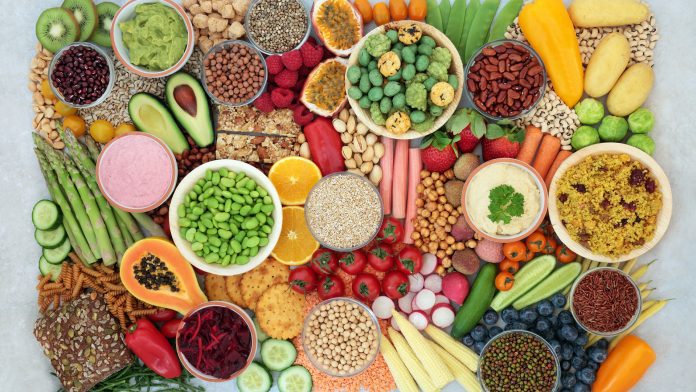
Meat substitutes used as part of a plant-based diet often have poor nutritional value, accompanied by misleading nutritional information, according to a study from the Chalmers University of Technology.
The availability of plant protein-based meat substitutes has increased rapidly as more people adopt a plant-based diet. However, there are many issues with the nutritional value of these products. According to the researchers, many of the meat substitutes sold in Sweden claim a high content of iron, however, this iron often comes in forms that cannot be absorbed by the body.
The benefits of a plant-based diet
A plant-based diet made up of foods such as root vegetables, pulses, fruit, and vegetables has many positives, such as a low climate impact and health benefits. These health benefits can reduce the risk of age-related diabetes and cardiovascular disease.
There have been relatively few studies on the health effects of textured plant proteins, which are used in meat substitute products.
In the new study, researchers from the Division of Food and Nutrition Science at Chalmers University analysed 44 different meat substitutes available in Sweden. The products are mainly manufactured from soy and pea protein, but the study also examined tempeh, which is made from fermented soy, and mycoproteins, which are made from fungi.
“Among these products, we saw a wide variation in nutritional content and how sustainable they can be from a health perspective. In general, the estimated absorption of iron and zinc from the products was extremely low. This is because these meat substitutes contained high levels of phytates, antinutrients that inhibit the absorption of minerals in the body,” said Cecilia Mayer Labba, the study’s lead author.
Phytates accumulate when proteins are extracted for use in meat substitutes and are found naturally in beans and cereals. Phytates form insoluble compounds with essential dietary minerals, such as non-heme iron (iron found in plant foods) and zinc, in the gastrointestinal tract, where mineral absorption takes place. The formation of these compounds means the body cannot properly absorb the minerals in the intestine.
“Both iron and zinc also accumulate in protein extraction. This is why high levels are listed among the product’s ingredients, but the minerals are bound to phytates and cannot be absorbed and used by the body,” explained Mayer Labba.
The importance of accurate nutritional information
Iron deficiency is a widespread global health issue. In Europe, 10-32% of women of childbearing age are affected by iron deficiency and almost one in three teenage girls at secondary school in Sweden. Women are also more likely to have switched to a plant-based diet and to eat less red meat, which is an important source of iron that can be easily absorbed in the digestive tract.
“When it comes to minerals in meat substitutes, the amount that is available for absorption by the body is a very important consideration. You cannot just look at the list of ingredients. Some of the products we studied are fortified with iron, but it is still inhibited by phytates. We believe that making nutrition claims on only those nutrients that can be absorbed by the body could create incentives for the industry to improve those products,” said Ann-Sofie Sandberg, Professor of Food and Nutrition Science at Chalmers and co-author of the study.
Tempeh differed from the other meat substitutes in the amount of iron that could be successfully absorbed by the body. The researchers expected this as the fermentation process in tempeh production uses microorganisms that break down phytates.
Mycoproteins stood out as they had high zinc content, without containing any known absorption inhibitors. However, it is still unclear how well human intestines can break down the cell walls of mycoprotein, according to the researchers.
“Plant-based food is important for the transition to sustainable food production, and there is huge development potential for plant-based meat substitutes. The industry needs to think about the nutritional value of these products and to utilise and optimise known process techniques such as fermentation, but also develop new methods to increase the absorption of various important nutrients,” concluded Mayer Labba.









